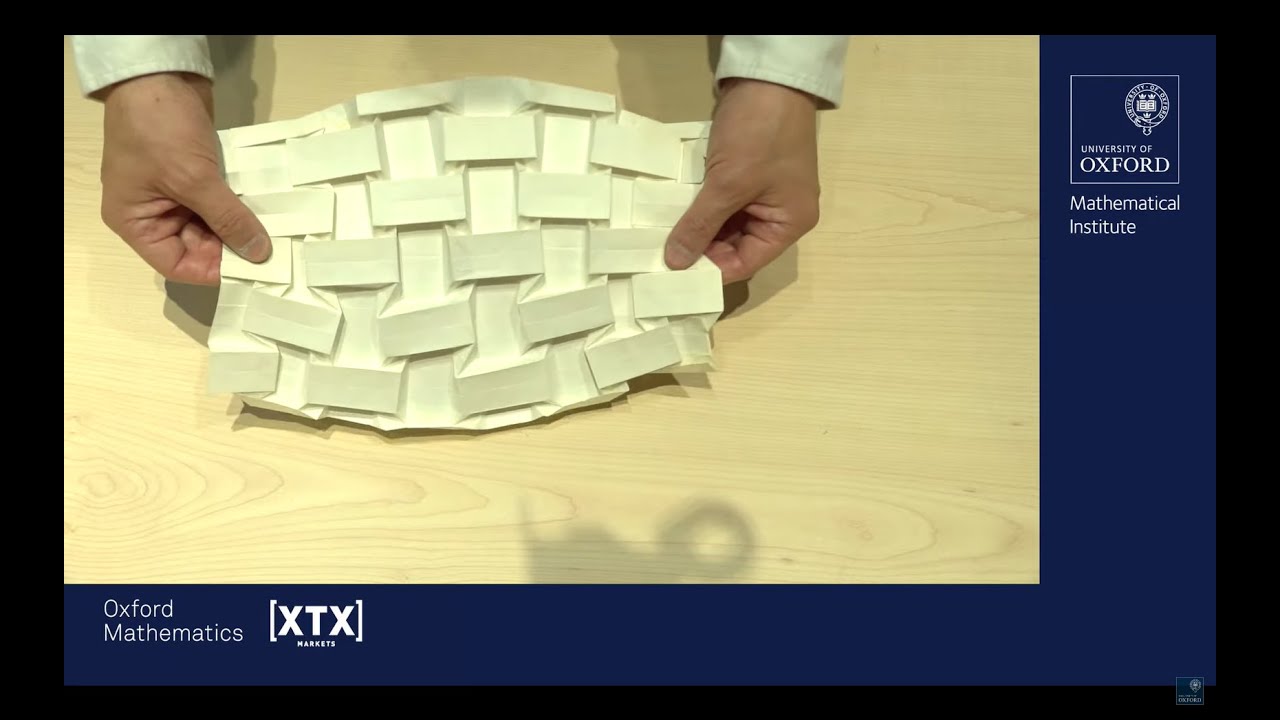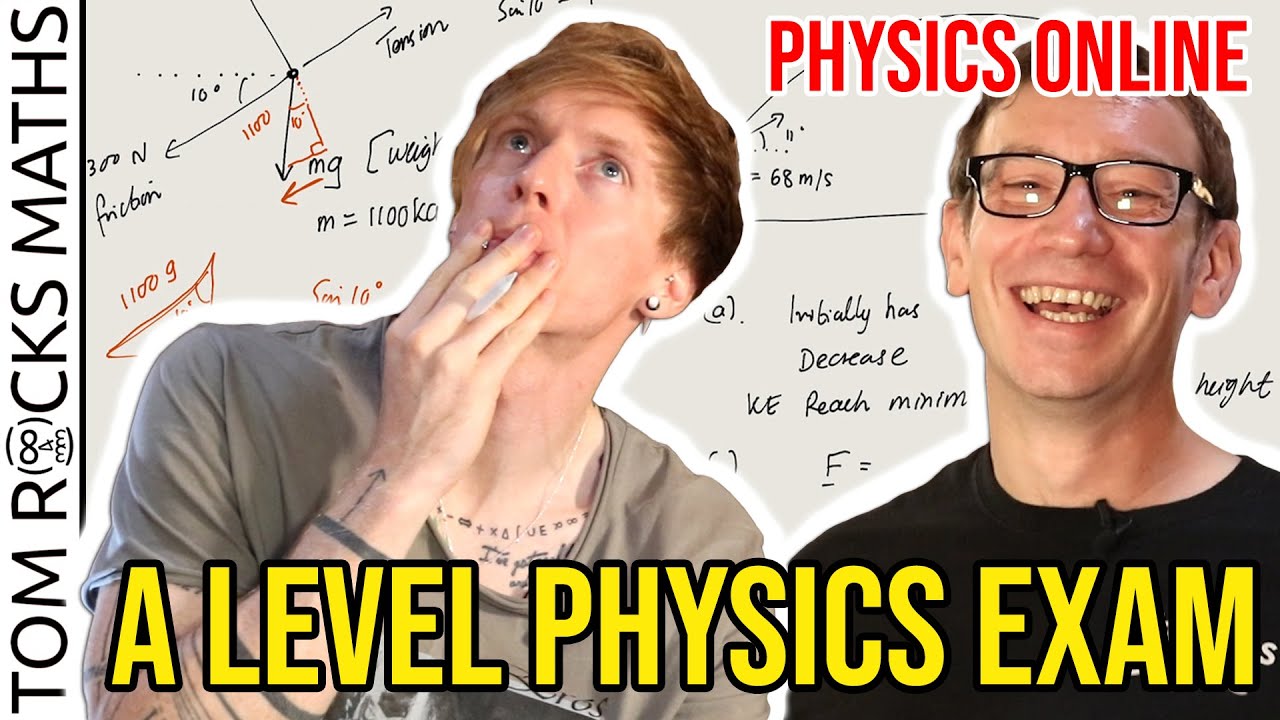Tadashi Tokieda - Magic with a ribbon, paperclips, rubber bands
TLDRIn a Simon Center lecture, Professor Tadashi Tokieda mesmerized the audience with mathematical magic, showcasing the beauty of mathematics in everyday objects. Using simple items like paper strips and paper clips, he demonstrated fundamental principles of mathematics through engaging and entertaining tricks, turning a lecture into an interactive exploration of the unexpected in the mundane, highlighting the joy and wonder of discovery in science.
Takeaways
- 🎓 The speaker, Tadashi Tokieda, is a renowned mathematician known for his engaging talks on mathematics found in everyday objects.
- 🔍 Tokieda uses simple objects like paper clips and rubber bands to demonstrate complex mathematical principles, making math accessible and fun.
- 🪄 He performs a series of magic tricks to illustrate mathematical concepts, showing that math is not just about calculations but also about understanding relationships and patterns.
- 🔗 The paper clip and rubber band tricks highlight the concept of 'Borromean links,' a type of mathematical knot that is interlocked in a way that removing one link allows the others to be separated.
- 📚 Tokieda emphasizes the importance of observation and not dismissing small differences, as they can lead to significant changes in outcomes, a crucial lesson in scientific exploration.
- 🤔 He encourages guessing as a part of the scientific process, stating that being wrong is an opportunity to learn and improve one's understanding.
- 🧠 The talk demonstrates that our brains can perform 'calculations' without numbers or formulas, predicting outcomes based on observed patterns.
- 🔄 Tokieda shows that seemingly simple actions can have complex outcomes, and that understanding these requires careful consideration and sometimes trial and error.
- 💡 The presentation underscores the idea that nature is often simple and straightforward, and that the simplest explanation is often the correct one in scientific pursuits.
- ⚠️ The speaker warns against the misconception that more links or connections always equate to greater safety, as seen in the example of climbers using carabiners.
- 🌐 Tokieda concludes by emphasizing the importance of curiosity and persistence in scientific research, and the joy of making new discoveries and sharing them with others.
Q & A
Who is the speaker at the de la Pietra lecture?
-The speaker is Tadashi Tokieda, a director of mathematical studies at Trinity Hall, University of Cambridge, and a distinguished visiting professor at Stanford University.
What is Tadashi Tokieda known for in his talks?
-Tadashi Tokieda is known for his engaging and fun talks on mathematics, especially using everyday objects and toys to illustrate basic mathematical principles.
What is the significance of the paper clip and rubber band magic trick in the lecture?
-The paper clip and rubber band magic trick serves as a visual and interactive way to demonstrate mathematical concepts and principles, as well as to engage the audience in the wonders of mathematics.
What is the concept of 'Borromean links' mentioned in the lecture?
-Borromean links refer to a configuration where three loops or rings are interlocked in such a way that any two of them can be separated if the third one is removed, but all three cannot be separated simultaneously.
Why did the speaker choose to perform magic tricks during the lecture?
-The speaker chose to perform magic tricks to capture the audience's interest and to use these tricks as a medium to explain complex mathematical concepts in a more accessible and entertaining way.
What is the lesson from the lecture about the misconception that more links in a system always increase safety?
-The lesson is that more links do not necessarily equate to more safety, as demonstrated by the Borromean link example, where adding a link can actually decrease the overall stability of the system.
What is the importance of being observant in scientific research as highlighted by the speaker?
-Being observant is crucial in scientific research because it allows one to notice subtle differences that may seem innocuous but can lead to significant discoveries or changes in understanding.
How does the speaker encourage the audience to approach problem-solving in mathematics?
-The speaker encourages the audience to always make a guess before solving a problem, as it can lead to a sense of accomplishment if correct or provide a valuable learning opportunity if incorrect.
What is the relationship between the paper clip trick and the concept of 'calculation' as discussed in the lecture?
-The paper clip trick demonstrates that calculation is not limited to numbers and formulas but can also be applied to physical objects and their interactions, challenging the traditional view of mathematics.
How does the speaker use humor and personal anecdotes to connect with the audience?
-The speaker uses humor, such as light-hearted jokes about his language abilities and personal anecdotes about his experiences, to make the lecture more relatable and enjoyable for the audience.
Outlines
🎓 Welcoming and Introduction to Mathematical Lecture
The speaker begins by warmly welcoming the audience to the Simon Center and the De La Pietra Lecture, expressing excitement about the presence of enthusiastic high school students. The guest lecturer is introduced as Tadashi Tokieda, a renowned director of mathematical studies at Trinity Hall, Cambridge, and a distinguished visiting professor at Stanford University. Tokieda is known for his engaging and entertaining talks that connect everyday objects and toys with fundamental mathematical principles, often incorporating a touch of magic. The speaker encourages the audience to actively participate and ask questions, despite the potential language barrier, highlighting Tokieda's multilingual background and the universal appeal of his presentations.
🔬 Exploring the Magic of Paper Clips and Paper
The lecture continues with a demonstration of a simple yet intriguing magic trick involving a strip of paper bent into an 'S' shape and held in place by two paper clips. The paper clips are shown to link together when the ends of the paper strip are pulled, creating a surprising and visually engaging effect. The trick is performed again by Professor Abanov, the deputy director of the Simon Center, to emphasize the reproducibility and educational value of the demonstration. The speaker then introduces variations of the trick, adding a rubber band to the setup and exploring different outcomes based on the rubber band's position, illustrating the importance of careful observation and the scientific method in understanding the underlying principles.
🔄 The Art of Topological Surprises with Paper and Rubber Bands
Building on the initial trick, the speaker presents a sequence of variations, each with a unique outcome based on the arrangement of the paper clips and rubber bands. The audience is encouraged to guess the results, fostering an interactive and thought-provoking atmosphere. The speaker emphasizes the value of making educated guesses in scientific exploration, as they can lead to new insights and a deeper understanding of the subject matter. The session highlights the concept of 'Borromean links,' a topological configuration where three components are interlocked in a way that removing any one allows the other two to separate, drawing connections to historical and cultural symbols, as well as practical applications in mountaineering equipment.
📚 Reflecting on the Nature of Scientific Discovery
The speaker concludes the lecture by reflecting on the process of scientific discovery, likening the playful exploration of paper clips and rubber bands to the pursuit of understanding in research. He discusses the importance of patience, persistence, and the willingness to embrace failure as part of the learning process. The speaker also touches on the joy of making new connections and the potential for simple experiments to lead to profound insights, encouraging the audience to continue asking questions and exploring the world around them with curiosity and an open mind.
Mindmap
Keywords
💡Tadashi Tokieda
💡Mathematical Studies
💡Distinguished Visiting Professor
💡Everyday Objects
💡Magic Tricks
💡Calculation
💡Borromean Link
💡
💡Topological
💡Scientific Research
💡Carabiners
💡Mystery and Discovery
💡Patience and Persistence
Highlights
Introduction of Professor Tadashi Tokieda, a renowned mathematician known for his engaging talks on mathematics in everyday life.
Demonstration of a simple yet intriguing magic trick using paper clips and a strip of paper to illustrate mathematical principles.
Explanation of how everyday objects can be used to demonstrate complex mathematical concepts, making math more relatable and engaging.
The concept of calculation being more than just numbers and formulas, with paper clips and rubber bands used to perform 'calculations'.
Presentation of a sequence of magic tricks to explore the mathematical properties of linking and unlinking objects.
Discovery of the 'Borromean link' through simple experiments, a configuration where three rings are interlocked but any two can be separated.
Cultural significance of the Borromean link, used as a coat of arms by the Borromeo family and found in various cultures.
The importance of observation and careful consideration in scientific experiments, even with simple materials.
The potential danger of assuming more links equate to more safety, especially in applications like mountain climbing.
The process of scientific discovery through trial and error, and the value of persistence in research.
Anecdote about George Bernard Shaw and Winston Churchill, highlighting the importance of humor and friendship in intellectual pursuits.
The idea that anyone can participate in scientific research and discovery, not just seasoned professionals.
The concept of 'subtracting' paper clips, exploring the possibility of unlinking already linked paper clips with a strip of paper.
The unpredictability and excitement of scientific research, where even the presenter does not know what will happen next.
The encouragement for the audience to conduct their own experiments and research, fostering a sense of curiosity and exploration.
Reflection on the process of learning and the journey of mastering a new skill or field, akin to learning a musical instrument.
Transcripts
Browse More Related Video

A world from a sheet of paper - Tadashi Tokieda

How to Make Teaching Come Alive - Walter Lewin - June 24, 1997

Conductors and Insulators - Electricity - Science for kids

Oxford University Mathematician takes High School GCSE Further Maths Exam

Can an Oxford University Mathematician solve a High School Physics Exam? (with @PhysicsOnline)

Ryan learns Easy DIY Science Experiment for Kids with how to make a homemade Volcano
5.0 / 5 (0 votes)
Thanks for rating: